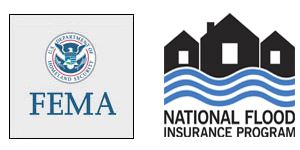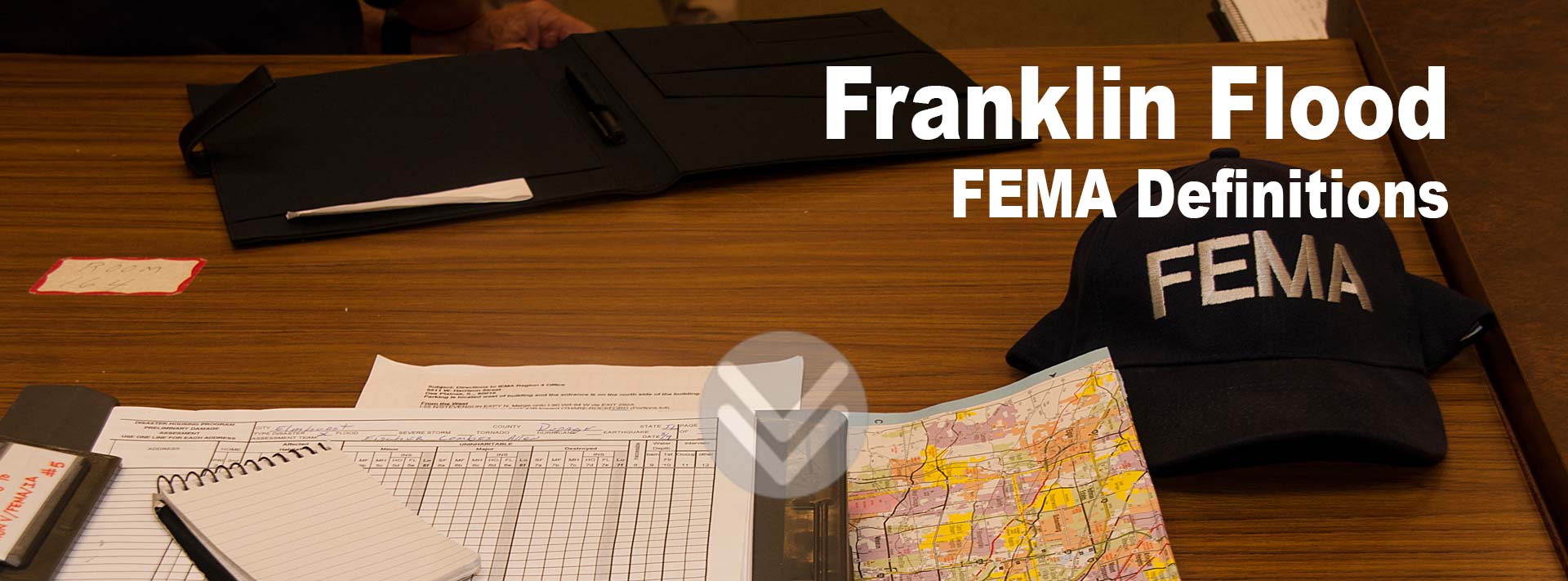| A - B | C | D - F | G - L | M - N | O - R | S - Z |
• Date of Construction--The date that the building permit was issued, provided the actual start of construction, repair, reconstruction, or improvement was within 180 days of the permit date.
• Declarations Page--A computer-generated summary of information provided by the prospective policyholder in the application for flood insurance. The Declarations Page also describes the term of the policy and the limits of coverage and displays the premium and the insurer's name. The Declarations Page is a part of the flood insurance policy.
• Deductible Buyback--The option whereby, for an additional premium, policyholders who wish to reduce their deductibles from the standard deductibles of $1000 per building loss and per contents loss for Pre-FIRM risks may purchase separate $500 deductibles for building and contents coverages.
• Described Location--The location where the insured building or personal property is found. The described location is shown on the Declarations Page.
• Diagram Number--Any of the numbers used in the instructions to the NFIP Elevation Certificate to identify the diagrams of the eight main types of buildings.
• Direct Physical Loss By or From Flood--Loss or damage to insured property, directly caused by flood. There must be evidence of physical changes to the property.
• Doublewide Manufactured (Mobile) Home--A manufactured (mobile) home that, when assembled as a non movable, permanent building, is at least 16 feet wide and has an area within its perimeter walls of at least 600 square feet.
• Dwelling--A building designed for use as a residence for no more than four families or a single-family unit in building under a condominium form of ownership.
• Dwelling Form--See Standard Flood Insurance Policy--Dwelling Form.
E
• Elevated Building--A building that has no basement and has its lowest elevated floor raised above the ground level by foundation walls, shear walls, posts, piers, pilings, or columns. Solid perimeter foundations walls are not an acceptable means of elevating buildings in V and VE zones.
• Emergency Program--The initial phase of a community's participation in the National Flood Insurance Program. During this phase, only limited amounts of insurance are available under the Act.
• Enclosure--That portion of an elevated building below the lowest elevated floor that is either partially or fully shut in by rigid walls.
• Erosion--The collapse, undermining, or subsidence of land along the shore of a lake or other body of water. Erosion is a covered peril if it is caused by waves or currents of water exceeding their cyclical levels which result in flooding.
• Expense Constant--A flat fee formerly charged on each new and renewal policy, the Expense Constant was eliminated effective May 1, 2003, and no longer affects the premium calculation for new and renewal business. However, the Expense Constant may affect the calculation of refunds going back prior to May 1, 2003, for policy cancellations and endorsements.
F
• Federal Emergency Management Agency (FEMA)--The federal agency under which the National Flood Insurance Program (NFIP) is administered. In March 2003, FEMA became part of the newly created U.S. Department of Homeland Security.
• Federal Policy Fee--A flat charge that the policyholder must pay on each new or renewal policy to defray certain administrative expenses incurred in carrying out the National Flood Insurance Program.
• Financial Assistance/Subsidy Arrangement--The arrangement between an insurance company and FEMA to initiate the company's participation in the Write Your Own (WYO) Program. It establishes the duties of the company and the government.
• Finished (Habitable) Area--An enclosed area having more than 20 linear feet of finished walls (paneling, etc.) or used for any purpose other than solely for parking of vehicles, building access, or storage.
• Flood--
◦ A general and temporary condition of partial or complete inundation of two or more acres of normally dry land area or of two or more properties (at least one of which is the policyholder's property) from: --Overflow of inland or tidal waters; or --Unusual and rapid accumulation or runoff of surface waters from any source; or --Mudflow;or
◦ Collapse or subsidence of land along the shore of a lake or similar body of water as a result of erosion or undermining caused by waves or currents of water exceeding anticipated cyclical levels that result in a flood as defined above.
• Flood Hazard Boundary Map (FHBM)--Official map of a community issued by FEMA, where the boundaries of the flood, mudflow, and related erosion areas having special hazards have been designated.
• Flood Insurance Claims Office (FICO)--An NFIP claims processing office set up in a catastrophe area when a sufficient number of flood claims result from a single event.
• Flood Insurance Rate Map (FIRM)--Official map of a community on which FEMA has delineated both the special hazard areas and the risk premium zones applicable to the community.
• Flood Response Office (FRO)--The FRO provides a local presence in the affected area and supports the WYO companies, the NFIP Servicing Agent, and various federal, state, and local officials in providing answers to claims coverage questions, forms for claims handling, and survey and statistical input. One of the key requirements of personnel at the FRO is to coordinate and conduct reinspections of WYO and NFIP Direct losses. The FRO also tracks adjuster performance and provides such information to interested WYO and NFIP Direct companies.
• Floodplain--Any land area susceptible to being inundated by flood waters from any source.
• Floodplain Management--The operation of an overall program of corrective and preventive measures for reducing flood damage, including but not limited to, emergency preparedness plans, flood control works, and floodplain management regulations.
• Flood proofing--Any combination of structural and nonstructural additions, changes, or adjustments to structures, which reduce or eliminate risk of flood damage to real estate or improved real property, water and sanitation facilities, or structures with their contents.
• Freeboard--An additional amount of height above the Base Flood Elevation used as a factor of safety (e.g., 2 feet above the Base Flood) in determining the level at which a structure's lowest floor must be elevated or flood proofed to be in accordance with State or community floodplain management regulations

x
x
Franklin for Agent Toolbox
Flood Insurance is Affordable Again:
The Homeowner Flood Insurance Affordability Act of 2014 (HFIAA), which went into effect July 1, 2014, restores grandfathering and much of the previous affordable rate structure and more reasonable regulations. For the consumer this means that NFIP Flood Insurance is affordable and obtainable again.
For information talk to a licensed Franklin Flood Insurance Agent TODAY

Franklin Flood, LLC, 120 East Uwchlan Ave, Suite 101, Exton, PA 119341 Toll Free 888 567 9600 Fax 610 524 0900


This site and it's contents are protected by United States and International copyright law. Reproduction without permission is prohibited.




